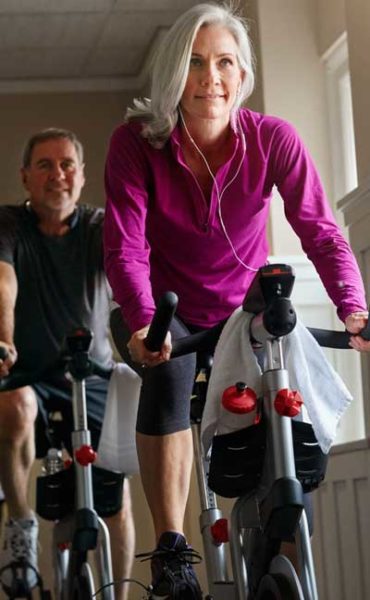The Aging Cyclist
Nov. 4th, 2023 10:11 amI was 35 years old when I started my adult cycling career. In those early years, my rapidly-growing cycling fitness more than compensated for any loss of overall fitness that came as I aged.
As the years passed, my cycling fitness reached a stable plateau, while the effects of aging slowly but consistently gained momentum. But I wasn’t worried; throughout my forties I could easily keep up with riders ten years younger.
But when I turned 50, I noticed it took increasingly more effort to keep up with the kids. And now that I’m 60 years old, I have to admit that I’m simply not keeping up with them anymore, and never will again, no matter how hard I train.
So in case you’re on that same career path, here’s a few observations about my experience as an aging cyclist.
It’s easiest to see in the numbers. It wasn’t as linear as the “220 minus age” formula implies, but my max heart rate has dropped significantly over the past 15 years, from 175+ down to 160. And the inevitable loss of muscle mass has been reflected in my FTP and other measurements of power output like sprinting duration and max power.
The media always invokes the idea that we need more recovery time after hard efforts as we age. For me, that manifests mostly in my ability to do repeated bursts of high-intensity effort within a ride. I don’t feel I need more recovery time between rides; if I need more time for anything after a hard ride, it’s for my motivation to recover! And of course the standard prescription for maintaining fitness as we age is to continue doing severely painful intensity workouts. Ugh!
One generalization I can confirm is that as I’ve aged, my sleep cycle has become shorter and less refreshing. Gotta start embracing the nap, although they’ve always left me feeling nauseous afterward.
Another change is that I’m less willing to tolerate bad weather. I’m good with heat, but I’m kind of done thinking that riding in the cold is any fun. Doubly so for rain, and the annoying cleanup routine that follows a wet ride. Yes, it can be done; no, I don’t think it’s worth it anymore.
But once you’re out on the road on a nice day, what does riding “over the hill” feel like? It feels like having one of those days where you’re not performing at your best… every single day! Whether it’s heavy legs or lack of aerobic fitness, it always feels as if there’s something limiting me. There aren’t many of those strong days when you’re at peak fitness and everything comes effortlessly.
Instead of looking forward to hills as a place to attack your group, you begin to fear them as places where you’ll fall behind the group. And they drop you more frequently on those climbs… and on the flats… and on descents. You still participate in group rides, but you wind up isolated and riding by yourself much of the time.
You get discouraged on group rides, because you’re the last person to each rest stop, which means you always get the least rest before the group sets out again, despite being the person who needs recovery the most. So you give up on the group and spend more time doing solo rides.
That’s what it’s like. I’ve had an undeniable drop-off in physiological performance due to aging. But at the same time, psychologically I’m just less willing to tolerate the suffering inherent in high-intensity, maximal efforts. To keep up with other riders, I have to spend more and more of my time riding at my limit, and it’s harder and harder to marshal the motivation to spend long hours riding at that limit.
While I was slowly getting older, I spent 25 amazing years near the front of the pack. Now that I’m 60 years old, that’s simply no longer a possibility. It’s time to set ego aside and get used to being one of the slower riders that other people have to wait for. It’s either that, or ride solo, which is something I’ve always done quite a lot of.
While I may not be the strongest cyclist in the pack any more, I still have the advantage of being significantly healthier than my sedentary age-group peers. And I still have as much passion for cycling as I’ve ever had. The bottom line is that I need to accept my reduced capabilities, adjust my goals to match them, find groups that will tolerate them, and just ride on.
May the road before you be a long, enjoyable one!



